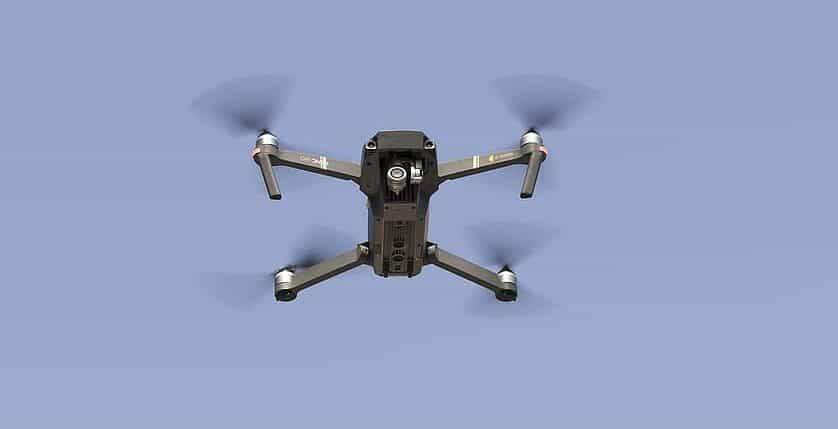If you’re reading this article, then you’re probably a drone pilot who has experienced the frustration of having the wind ruin your plans. Read on to find the most accurate and best wind meters for drone flying to keep your machine in the air!
Obviously, if it’s far too windy, you can probably tell just by looking out of the window and seeing the trees shake. But if it’s kinda borderline, having a wind meter to tell you exactly whether you should or shouldn’t fly the drone can be super helpful.
In this article, we’ll take a look at:
Easy-to-use handheld wind meters
How windy is too windy to fly?
What to look for in a wind meter/anemometer
… so let’s get into it, starting with the product recommendations of the best wind meters for drone flying!
At A Glance: The Best Wind Meters For Drone Flying
Here are three top choices at a glance, depending on what you need. 9.9 times out of 10, the Holdpeak product is a solid purchase for almost any purpose that requires a portable / easy-to-use handheld anemometer.
Last update on 2025-01-05
Please note: if you’re looking for a smartphone wind meter, this one by Vaavud needs a headphone jack to work, which might be a problem e.g. with the newest iPhones.
So let’s talk about these, plus a couple of other options.
HOLDPEAK 866B Digital Anemometer Handheld Wind Speed Meter
Okay, so… mentioned above, this handheld wind meter from Holdpeak is a really safe bet for the majority of users. This includes the best wind meter for drone flying.
Some boxes that are ticked include:
- Good detection range. Detects wind from as little as 0.3m/s. And goes all the way up to 69mph.
- Indicates wind chill & temperature as well as speed (maybe not needed, but can’t hurt to have)
- Small (6.5-inches tall) and lightweight (0.2kg) makes it easy to pack and carry around
- Can be screwed onto a tripod
There are some features missing here that a slightly more expensive anemometer might have like humidity readings and USB connection. However, for this particular purpose, I don’t think most people will require that. You’ll likely do just fine with this for getting and keeping your drone safely in the air.
And, if it makes you feel reassured (it should!), there are thousands of reviews on Amazon too.
Last update on 2025-01-05
Vaavud Wind Speed Meter with Smartphone App
If you’re strictly looking for a product that will plug into your smartphone, then this meter from Vaavud could be a good choice for you.
Again I feel it’s worth pointing out that you’ll need a headphone jack for this, and that may be problematic for some phones, e.g. newest iPhones.
With this wind speed meter, you’ll download an app that comes along with the purchase. Plugin the anemometer to your headphone jack and read wind speed within the app.
If I’m being honest, I’d personally go with a handheld one such as the Holdpeak every time. That being said, this option is smaller, and it doesn’t require a battery. Both of those things could be useful so, bear in mind that:
- It isn’t compatible with some phones
- The range is weaker (picking up only between 2m/s and 25m/s)
PiscatorZone Handheld Mini Wind Speed Meter
A solid low-cost & basic option this is included in most lists of best wind meters for drone flying. Very small and lightweight – pocket-sized, even.
Arguably a little fiddlier to get working and use the settings, but it’ll do what you need it to do (measure the wind speed!).
Can’t be mounted on a tripod, but can also be attached to a lanyard.
Last update on 2025-01-05
In case, for any reason, one of those three options doesn’t do it for you — here are a few other noteworthy inclusions to the wind meters for drone flying:
BTMETER BT-100 Handheld Wind Speed Meter
Last update on 2025-01-05
Kestrel 1000 Pocket Wind Meter / Digital Anemometer
Proster Anemometers Handheld Wind Speed Meter
When is it too windy to fly a drone?
Good question! The answer (shockingly) is: it depends. And it mostly depends on the model you’re flying.
There are some really cheap drones out there that will be easily knocked off-course by a slight breeze, or someone coughing nearby. Okay, maybe not that easy. But if you care enough about your drone to be reading this article, then you probably have something halfway decent.
Mario from TipsForDrones.com suggests that a good rule of thumb is to never fly in winds that are more than two-thirds of your drone’s max speed. So if your drone goes up to 18mph, steer clear of winds being 12mph+.
Of course the less wind the better, and you should check your own instruction manual or any other guidance provided by the manufacturer, but this rule of thumb should serve well. More than two-thirds = don’t risk it.
What To Look For In A Wind Meter For Drone Flying?
These are probably all fairly obvious things to think about, but just in case they’re helpful. When shopping for your wind meter, do consider:
- Are you looking for something that is handheld/battery-operated, or something that plugs into a smartphone
- What are the minimum & maximum detectable speeds
- How long is the battery life
- Is there a backlight
- Does it only measure wind speed, or also wind chill & other factors
- How big & heavy is it
- Will it mount to a tripod, or attach to a lanyard
- Will it fit in your pocket? Your camera bag?
- How expensive is it
- In which units will it measure wind speed
Conclusion
That’s a wrap! You’ll notice that these products & tips aren’t all exclusively related to drone flying. But, for your purposes, a general anemometer for measuring wind speed should do the job.
The same tool will work well for you, compared to those who are looking for something for shooting, kitesurfing, or any other purpose.
Good luck, and if you found this helpful but want to know more read about our Best Anemometers in 2021!
And if you are a game hunter, try – Best Wind Meters For Long Range Hunting





Trackbacks/Pingbacks